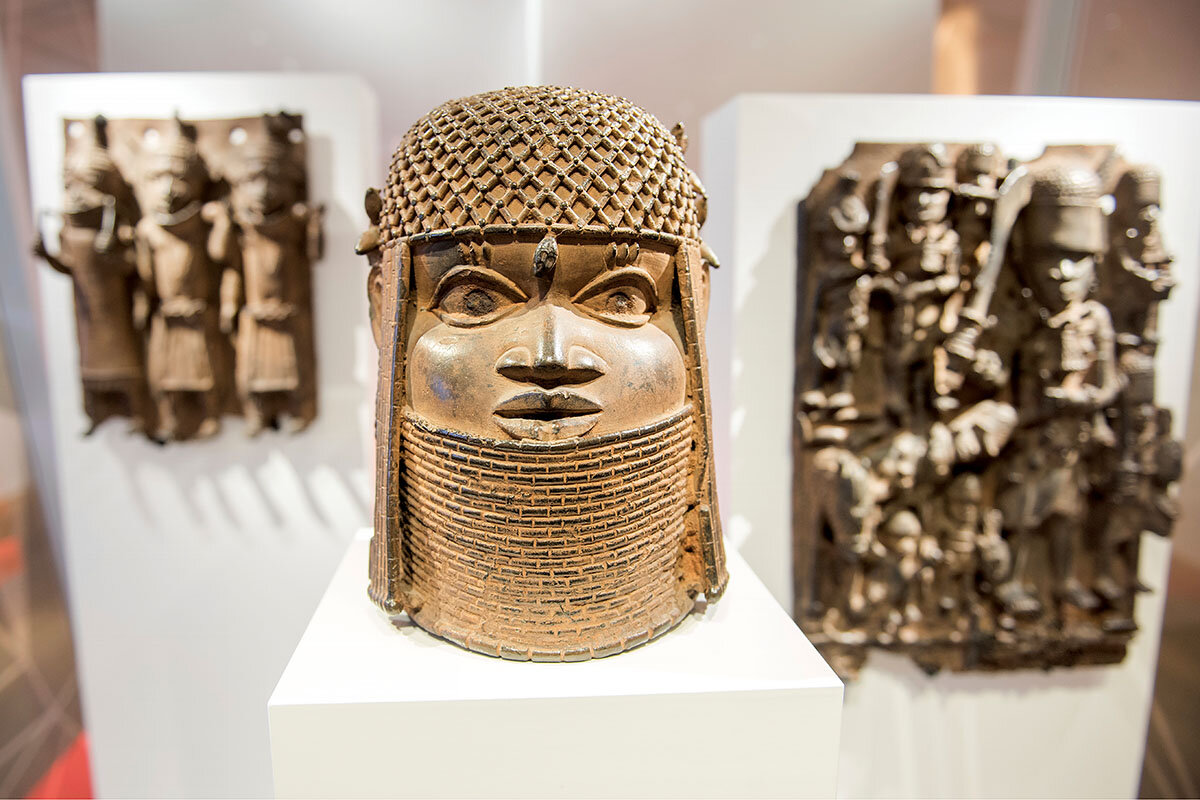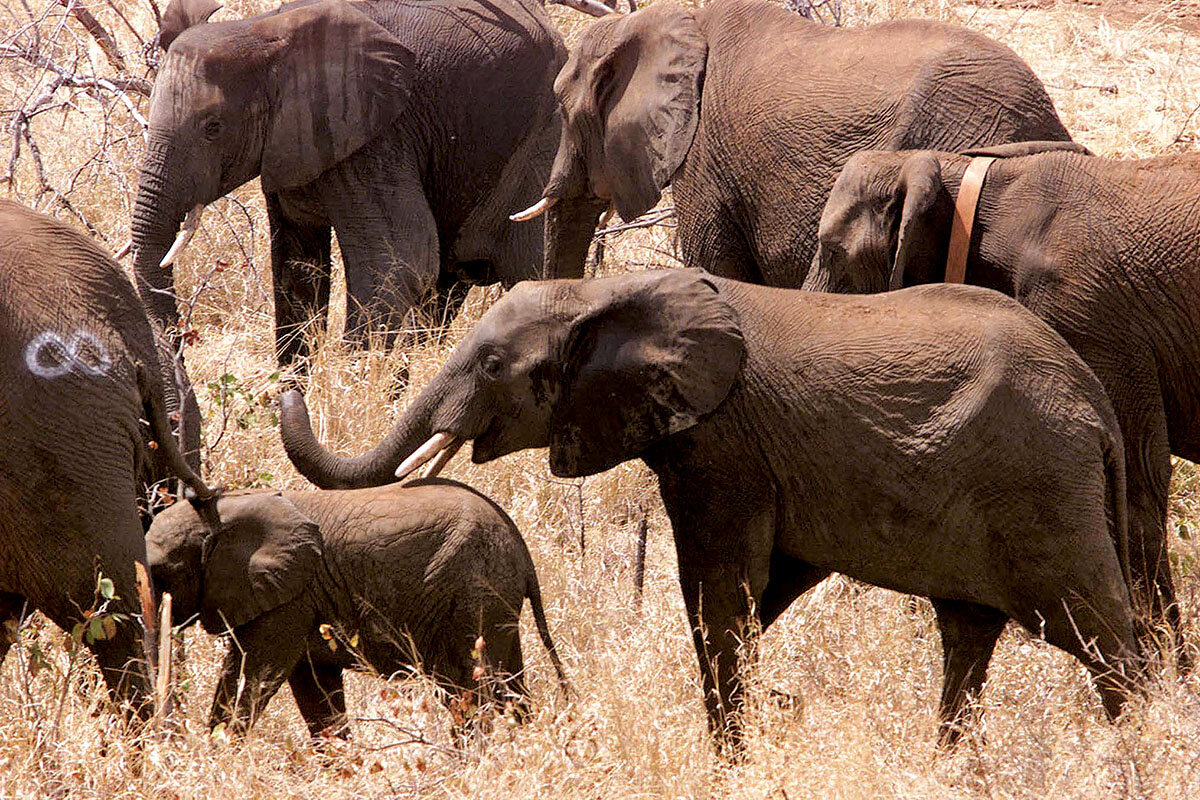Everything in its place: From stolen art to endangered monkeys
Loading...
This week we look at returning things to their original state, from preserving cultural heritage by sending antiquities home, to removing landmines from a part of Zimbabwe to benefit people and the animals moving through the great wildlife reserves in southeast Africa.
1. Canada
Digital media startups are helping revive local journalism in Canada. The consolidation of major media companies and a decline in traditional advertising have resulted in mass layoffs and community newspaper closures. And despite government initiatives to mitigate the trend, another 52 newspapers shut their doors this past year. But a growing number of online outlets are looking to fill those news deserts and change the journalism landscape.
Overstory Media Group represents several newsletter-based publications covering specific communities in British Columbia. Inspired by their members’ success, the group plans to launch 50 outlets and hire 250 journalists in towns across the country by 2023. At the same time, a separate network of independent news outlets, Indiegraf, is hoping to bring new voices into journalism by removing the barriers to launching a subscription-based startup. So far, it’s supported 18 community-focused outlets with a suite of pooled resources, such as web developers and marketing staff.
Canadaland, The Guardian
2. Brazil
The effort to save Brazil’s rarest primate is slowly bearing fruit, and being hailed as a prime example of collaborative conservation. Habitat fragmentation has long threatened the black lion tamarin, a monkey endemic to Brazil’s southeastern state of São Paulo. A major wave of settlement in the 1940s destroyed more than 80% of the state’s Great Pontal Reserve forests, and for decades, people believed the black lion tamarin was extinct.
Researchers from the Institute for Ecological Research (IPÊ) knew that restoring the primate’s landscape meant engaging with the settlers. IPÊ designed a network of forest corridors based on wildlife tracking data, and refined the plan through a series of “eco-negotiations’’ with the local communities. Buffer zones are created by planting trees on farmland along forest fragments, while about 50 families are growing “steppingstone” forests, 2.5-acre chemical-free coffee orchards interplanted with food crops that wildlife can use to cross between habitats. To date, IPÊ and its partners have planted more than 2.7 million tree seedlings and restored 7,410 acres of forest in the Great Pontal Reserve. Meanwhile, the black lion tamarin was removed from the critically endangered list, with a current population of about 1,800 in the wild.
Mongabay
3. Germany
Germany is set to be the first country to return the Benin Bronzes looted by British soldiers and sailors in 1897. The British Museum holds the largest collection of Benin Bronzes, but many of the artifacts were sold to museums across Europe and North America. German institutions in Berlin, Cologne, Dresden, Hamburg, Leipzig, and Stuttgart collectively hold more than 1,500 items from the theft.
Culture Minister Monika Grütters announced that Germany will present a legal and logistical road map for their restitution by the end of June, with the first transfer occurring next year. The art’s path forward is not entirely clear, but the creation of Legacy Restoration Trust (LRC) – a new, politically neutral organization that can receive the Benin Bronzes – helped facilitate Germany’s decision. “This is a huge step towards righting what is wrong, especially coming from a country that was a superpower in colonisation,” said Nigerian artist Victor Ehikhamenor, an LRC trustee. “Germany has chartered a path for other western countries struggling to find the right way to handle restitution cases.”
The Guardian
4. Zimbabwe
A project is underway to demine part of the largest contiguous wildlife area in the world. With U.S. and Swiss aid, Belgian demining organization APOPO is clearing more than 1,700 acres of Zimbabwe’s Sengwe Wildlife Corridor, part of the Great Limpopo Transfrontier Park (GLTP). During Zimbabwe’s 1964-79 civil conflict the Rhodesian army laid dense minefields to limit the movement of guerrilla fighters. This critical area allows wildlife to freely migrate between South Africa’s Kruger National Park and Zimbabwe’s Gonarezhou National Park, helping stabilize populations.
For 40 years, hidden anti-personnel land mines have endangered GLTP’s wildlife, including elephants and pangolins, and threatened the safety and livelihoods of thousands of families living near the park. APOPO has already cleared more than 10 acres of land, and the team expects to locate and eliminate roughly 15,300 mines by the end of the project. Coordinators say the corridor will be mine-free by 2025.
Apopo, Swiss Federal Department of Foreign Affairs
5. Nepal
In a win for local Indigenous groups, the European Investment Bank (EIB) vowed to address gaps in the implementation of a hydropower project in central Nepal. As a signatory to the International Labor Organization’s Convention 169, Nepal is legally bound to protect the rights of Indigenous peoples, who are entitled to consultation on any issues relating to the development of their traditional lands and resources. But communities around the world say renewable energy projects often fall short, including the Marsyangdi Corridor transmission line, a high-voltage power line set to run through forests and ancestral lands of hundreds of households in Nepal’s Lamjung district. EIB failed to adequately assess the line’s environmental and social impacts, according to a complaint filed in 2018, and did not obtain consent from affected residents.
The bank recently concluded that at least some of these claims were substantiated, and has hired an independent local expert to help correct the mistakes. EIB will also launch a public review of its social and environmental policies. Anirudha Nagar, communities director of the Accountability Counsel advocacy group, says this investigation “has far-reaching impacts for internationally financed development projects impacting the lands of indigenous peoples, both in Nepal and beyond.”
Thomson Reuters Foundation, Accountability Counsel, European Investment Bank
World
In an effort to combat art crime, Interpol has launched an app allowing mobile phone users to identify stolen artwork using a sophisticated image recognition program. ID-Art is a new tool to help recover lost pieces and deter art and artifact trafficking, a trade worth $10 billion annually, according to UNESCO estimates, making it one of the most profitable black markets in the world.
After downloading the app, users can photograph an art piece, upload an existing image, or use descriptive terms to search Interpol’s database of lost and stolen art, which includes more than 52,000 items. If the art in question appears to match a registered piece in Interpol’s database, the app prompts users to report it. During its pilot phase, ID-Art helped authorities recover two sculptures and two paintings in Europe. Loose requirements for tracking the chain of ownership mean that stolen pieces can often surface at legitimate auction houses, museums, or private collections, and with the new app, authorities say buyers and sellers will have little excuse for ignorance.
Forbes, Organized Crime and Corruption Reporting Project








